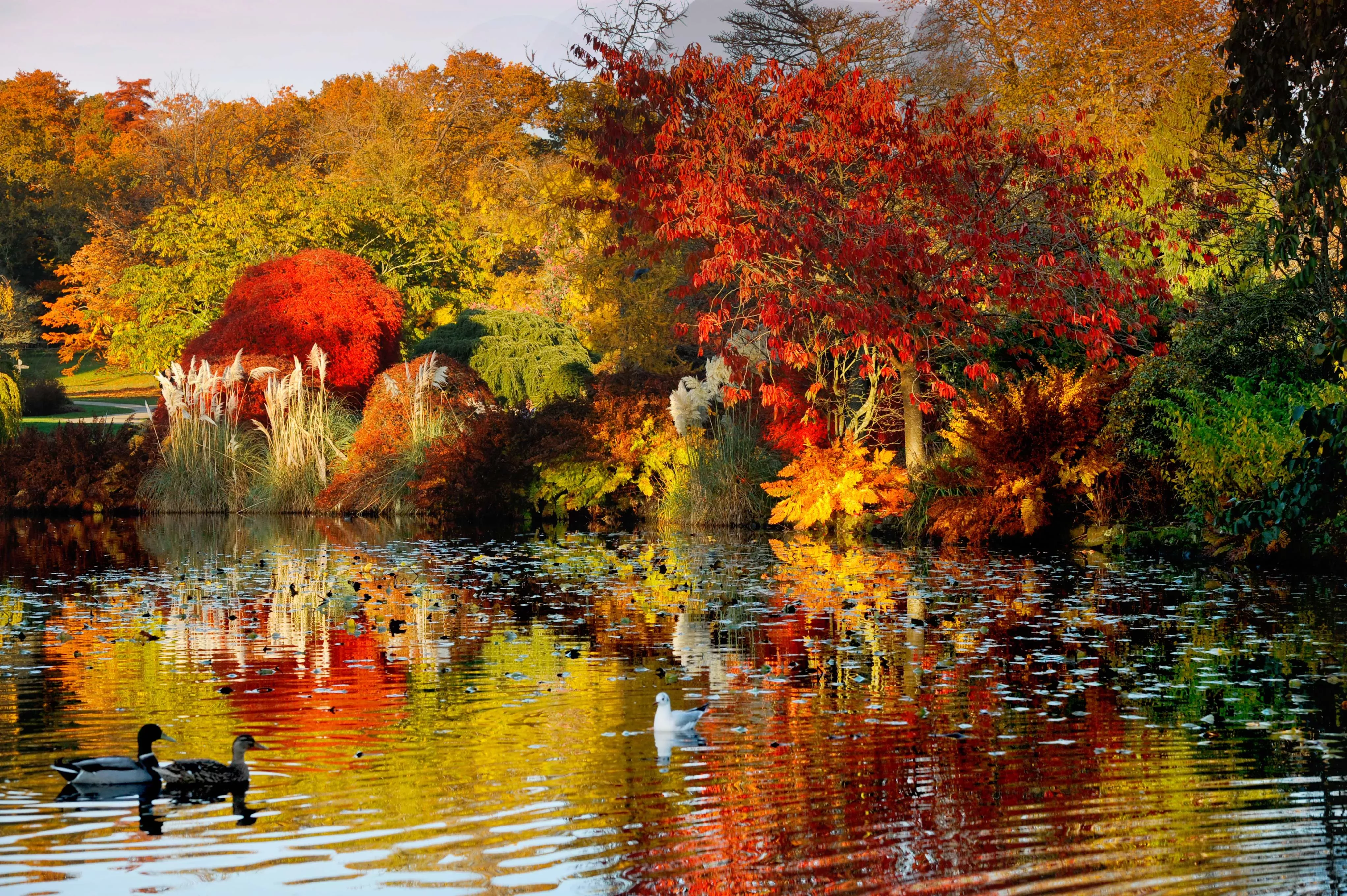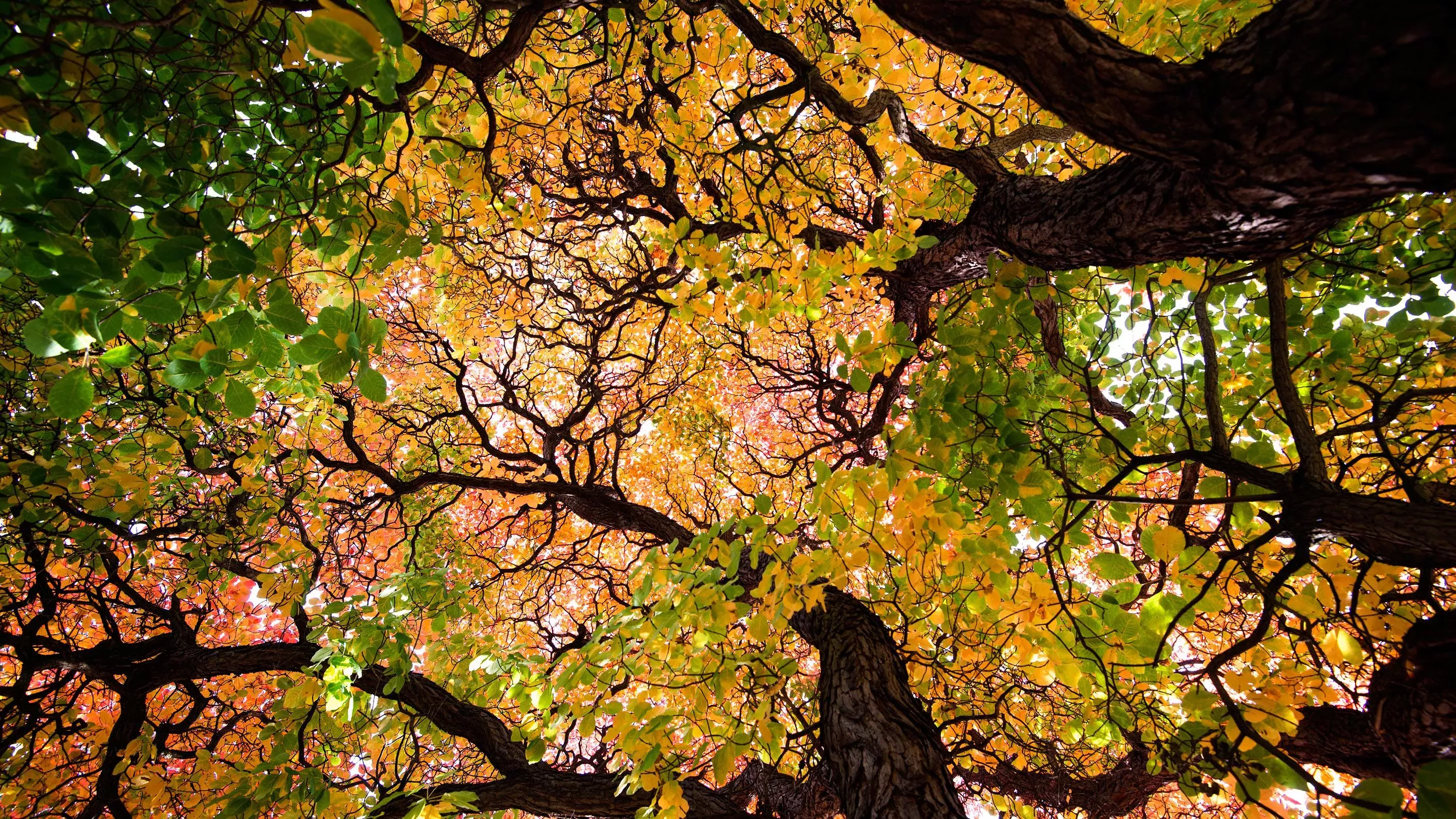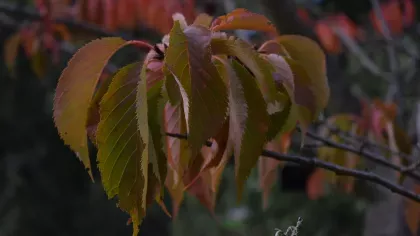21 November 2017
Why do leaves change colour in autumn
Chris Clennett, Garden Manager at Wakehurst, reveals why and how leaves change colour in autumn.

Why change colour?
Autumn colour is a fascinating phenomenon, where trees and shrubs that have been green all summer burst into flamboyant shades of yellow, orange and red. But why and how does it happen?
Trees, like most plants, use a green pigment called chlorophyll to photosynthesise – that is to produce sugars from the energy of the sun, using water and nutrients from the soil. This is what gives trees the energy they need to live and grow.
Leaves are the centre for this process, exposing the largest area they can to sunlight to speed things up. But leaves also contain many other substances, some used in photosynthesis and some created as by-products from it.
Hidden colours revealed
In autumn, trees that lose their leaves for winter go through a process to shut down photosynthesis and reclaim as many valuable chemicals as possible. Chlorophyll is constantly breaking down and being replaced through summer, but this process slows down in autumn. This reveals all those other chemicals in the leaves that were hidden by the presence of the dominant green chlorophyll.
These include yellow flavonols, orange carotenoids and red to purple anthocyanins. The exact mixture of these compounds varies between species, and hence the degree of yellow or red colour in the leaves.

Protection from the cold
It is thought the red or purple anthocyanins either protect the leaf from cold temperatures or deter pests, such as aphids. The presence of these coloured compounds might allow the tree longer to reabsorb other valuable nutrients as temperatures drop in autumn, so they are left in the leaf to help that process.
As the tree becomes dormant, a compound called abscisic acid triggers a seal to develop at the base of the leaves, before they fall off. This reduces water reaching the leaf and traps the chemicals remaining in the leaves. They gradually break down, changing the colour of each leaf before it drops to the ground. As the process is gradual, individual leaves will be at different stages, so a tree will have leaves of many changing hues as autumn progresses.
Trigger for autumn colour
The trigger for autumn colour to develop is a combination of day length and night temperature. As days shorten, the amount of sugar generated by photosynthesis drops off, and hormones in the plant trigger the leaf sealing and shedding process. This is accelerated by cold nights, but the lower temperatures also act on the compounds remaining in the leaf, breaking them down more quickly.
A warm dry 'Indian summer' followed by colder nights is the best combination, keeping the leaves working later and then shortening the leaf drop process. That way, more compounds remain in the leaf and there is less time for them to slowly break down to brown before the leaves drop. In a mild wet autumn, the whole process is much slower so leaves are often completely brown before they fall and individual trees, and even single leaves, change colour at different times, reducing the whole spectacle.



